
Kód: 08241856
Operational Art Requirements in the Korean War
Autor Thomas G Ziegler
Historical examples are an expedient way to develop an understanding of operational art theory and concepts. A historical illustration of both operational success and failure is the Korean War. Several aspects of the Korean War re ... celý popis
- Jazyk:
 Angličtina
Angličtina - Väzba: Brožovaná
- Počet strán: 60
Nakladateľ: Biblioscholar, 2012
- Viac informácií o knihe

Mohlo by sa vám tiež páčiť
-

Thoughts on the Cause of the Present Discontents. the Fourth Edition.
20.28 € -4 % -
![Old and New London; Illustrated. a Narrative of Its History, Its People, and Its Places. [Vol. 1, 2, ] by Walter Thornbury (Vol. 3-6, by E. Walford). Old and New London; Illustrated. a Narrative of Its History, Its People, and Its Places. [Vol. 1, 2, ] by Walter Thornbury (Vol. 3-6, by E. Walford).](https://media.libris.to/jacket/08069950t.jpg)
Old and New London; Illustrated. a Narrative of Its History, Its People, and Its Places. [Vol. 1, 2, ] by Walter Thornbury (Vol. 3-6, by E. Walford).
39.32 € -

Poema Epico Los Cinco Elmentos (Five Elements--an Epic)
16.36 € -

Little Light of Mine Senses Darkness
41.08 € -
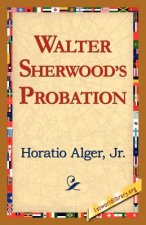
Walter Sherwood's Probation
18.11 € -

Creativity
21.92 € -

Strength in a Smile
19.66 €
Darujte túto knihu ešte dnes
- Objednajte knihu a vyberte Zaslať ako darček.
- Obratom obdržíte darovací poukaz na knihu, ktorý môžete ihneď odovzdať obdarovanému.
- Knihu zašleme na adresu obdarovaného, o nič sa nestaráte.
Viac informácií o knihe Operational Art Requirements in the Korean War
Nákupom získate 172 bodov
 Anotácia knihy
Anotácia knihy
Historical examples are an expedient way to develop an understanding of operational art theory and concepts. A historical illustration of both operational success and failure is the Korean War. Several aspects of the Korean War remain relevant to operational art in contemporary conflicts. It had a complex and evolving strategy, a dramatic interplay of tactical success and failures, uncertainty and miscalculation, shortages of means to accomplish ends, and the difficult challenge to set the conditions for a satisfactory conclusion to the conflict. America's full-scale involvement in the Korean War began on 25 June 1950, when the North Korean People's Army (NKPA) invaded the south intent on reunifying the country through force of arms. In little more than a month, aided by the element of surprise and superiority in almost every category of military performance, the NKPA captured nearly ninety percent of the Korean Peninsula. MacArthur's conceptualization and execution of Operation CHROMITE was a brilliant example of operational art. The amphibious assault at Inchon and subsequent breakout of the Pusan Perimeter by Eighth Army achieved the strategic objective--the preservation of the Republic of Korea. Then, after a hasty reassessment of strategic priorities, MacArthur led the U.N. forces in a disastrous attack into North Korea. During this period, operational art requirements were absent, and communist China intervened in the conflict. U.N. forces were nearly defeated. After a withdrawal from North Korea, U.N. forces were able to reorient and stabilize the conflict primarily due to the superb leadership and vision of General Matthew Ridgway. An examination of three distinct operational periods in the Korean War using the requirements of operational art as described in Army Doctrinal Publication 3-0 Unified Land Operations will reveal whether operational art was a factor in success or failure. This monograph argues that the commander met the requirements for operation
 Parametre knihy
Parametre knihy
Zaradenie knihy Knihy po anglicky Society & social sciences Education
69.91 €
- Celý názov: Operational Art Requirements in the Korean War
- Autor: Thomas G Ziegler
- Jazyk:
 Angličtina
Angličtina - Väzba: Brožovaná
- Počet strán: 60
- EAN: 9781288295289
- ISBN: 9781288295289
- ID: 08241856
- Nakladateľ: Biblioscholar
- Hmotnosť: 127 g
- Rozmery: 246 × 189 × 3 mm
- Dátum vydania: 13. November 2012
Obľúbené z iného súdka
-

Oxford IB Diploma Programme: IB Economics Course Book
62.39 € -

Cambridge IGCSE (R) & O Level Complete Physics: Student Book Fourth Edition
38.91 € -

Cambridge IGCSE (R) & O Level Complete Chemistry: Student Book Fourth Edition
42.62 € -

Physics for You
53.23 € -

Business Partner B1+ Workbook
16.98 € -4 % -

Speed and Accuracy: Multiplication
8.64 € -

Powerful Teaching: Unleash the Science of Learning
28.92 € -20 % -

Speed and Accuracy: Division
8.64 € -

Read Write Inc. Phonics: Red Ditty Book Bag Books (Mixed Pack of 10)
79.59 € -
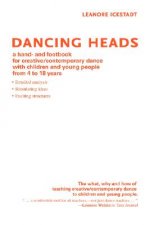
Dancing Heads
15.74 € -4 % -

Freiarbeitsmaterial für die Grundschule - Deutsch - Klasse 1/2
25.84 € -

Business Partner B1 Workbook
17.60 € -10 % -

Business Partner B2 Workbook
16.98 € -4 % -
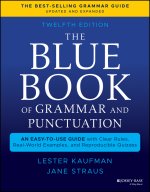
Blue Book of Grammar and Punctuation: An Easy- to-Use Guide with Clear Rules, Real-World Examples , and Reproducible Quizzes, Twelfth Edition
17.08 € -20 % -

OET Preparation
10.49 € -

KS3 Maths 10-Minute Weekly Workouts - Year 7
8.12 € -9 % -

OET Reading Subtest Preparation
12.86 € -7 % -

Grade 9-1 GCSE Maths AQA Revision Question Cards - Higher
10.80 € -

Oxford IB Diploma Programme: IB Theory of Knowledge Course Book
58.17 € -

Positive Discipline Tools for Teachers
18.42 € -6 % -

Embodied Teen
21.82 € -17 % -

1000 TRIOS or gapped sentences for Cambridge Advanced and Proficiency Exams
25.22 € -

Pearson Edexcel AS and A level Mathematics Statistics & Mechanics Year 1/AS Textbook + e-book
19.04 € -

(ISC) SSCP SG & SSCP Practice Test Kit, 3e
71.04 € -23 % -

Motivation and Reinforcement
47.25 € -

Pearson Edexcel International GCSE (9-1) English Language B Student Book
54.05 € -

GCSE Spanish Exam Practice Workbook (includes Answers & Free Online Audio)
8.02 € -10 % -

Imagine If...
11.01 € -24 % -

Vertical Academy
37.47 € -

Oxford International Primary Maths Second Edition: Practice Book 1
13.17 € -
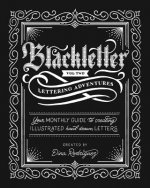
Vol 2 Blackletter Lettering Adventures
27.17 € -

AS & A Level Maths For Dummies
19.76 € -19 % -

Forensic Linguistics Articles
17.70 € -

CompTIA Security+ Review Guide - Exam SY0-601
26.56 € -20 % -
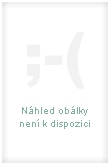
Abolition of Man
19.97 € -
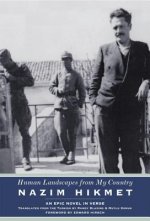
Human Landscapes from My Country
28.20 € -4 % -

Corrected Squares of The Book of Abramelin
615.55 € -

Hanbo Jutsu: Use of Hanbo, Cane and Walking Stick for Self Defense
11.83 € -

Reading Mind - A Cognitive Approach to Understanding How the Mind Reads
24.19 € -20 % -

KS3 Maths 10-Minute Weekly Workouts - Year 8
8.12 € -9 % -

Exam Prep for Microeconomics by Pindyck & Rubinfeld, 6th Ed.
46.02 € -

North Korea's Military Threat
29.65 € -

Ganzheitliche Sprachförderung
32.84 € -

English Language & Literature WORKBOOK: York Notes for GCSE (9-1)
9.67 € -4 % -

Release Your Inner Drive
16.36 € -13 % -

Effect of Registration Errors on Tracking in a Networked Radar System
69.91 € -

Princeton Review SAT Premium Prep, 2021
46.12 € -

CEH v11 Certified Ethical Hacker Study Guide + Practice Tests Set
76.19 € -5 % -

10 Practice Tests for the SAT, 2021 Edition
34.18 €
Osobný odber Bratislava a 2642 dalších
Copyright ©2008-24 najlacnejsie-knihy.sk Všetky práva vyhradenéSúkromieCookies



 21 miliónov titulov
21 miliónov titulov Vrátenie do mesiaca
Vrátenie do mesiaca 02/210 210 99 (8-15.30h)
02/210 210 99 (8-15.30h)